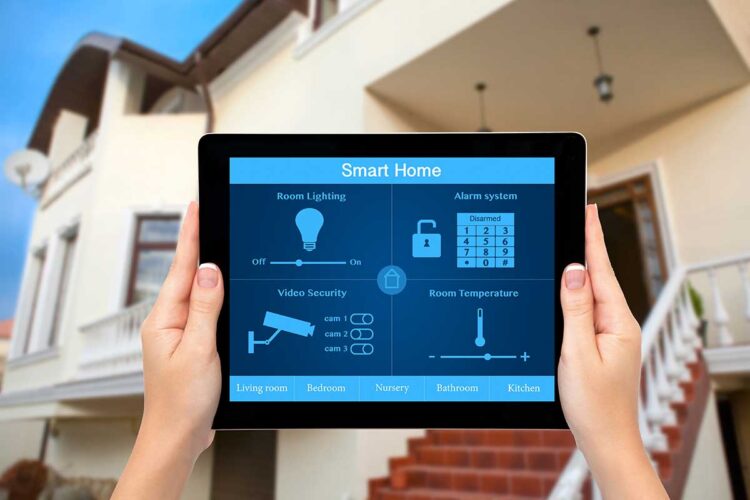In an era where environmental sustainability and economic prudence are paramount concerns, the construction industry is undergoing a transformative shift towards energy-efficient building design. As the global emphasis on reducing carbon footprints intensifies, optimizing energy efficiency in home building has emerged as a crucial objective.
Not only does it contribute to substantial cost savings over time, but it also plays a pivotal role in curbing the environmental impact of residential structures. In this blog, we’ll delve into the foundational principles, strategies, and technologies that drive energy-efficient home construction.
Foundations of Energy Efficiency
Energy efficiency in building design refers to the strategic utilization of resources to minimize energy consumption while maximizing desired outcomes. This approach involves the integration of various design elements, technologies, and practices aimed at reducing the energy required to maintain a comfortable and functional living environment. The significance of energy efficiency cannot be overstated – it not only leads to decreased utility bills for homeowners but also significantly reduces greenhouse gas emissions, contributing to a more sustainable future.
Passive Design Strategies
Passive design involves harnessing the natural elements and characteristics of a location to regulate temperature and lighting within a building. One key aspect of passive design is orientation, where a building is aligned to optimize exposure to sunlight during winter and minimize it during summer. Shading elements, such as overhangs and louvers, play a vital role in preventing excessive heat gain during hot months. Natural ventilation, achieved through well-placed windows and vents, enhances indoor air quality while reducing the need for mechanical cooling. Getting building services from an experienced team like D3 Built is the way to go to get your home designed with energy efficiency in mind.
Optimizing Building Systems

Building Envelope Optimization
A well-insulated building envelope is fundamental to energy efficiency. Insulation materials prevent heat transfer between the interior and exterior, reducing the need for constant heating or cooling. Air sealing, often achieved through proper sealing of gaps, cracks, and joints, ensures that conditioned air doesn’t escape, further improving energy efficiency. Efficient windows, equipped with advanced glazing technologies, contribute to thermal comfort by minimizing heat loss during winter and heat gain during summer.
HVAC Systems and Controls
Heating, ventilation, and air conditioning (HVAC) systems significantly impact a home’s energy consumption. Energy-efficient HVAC equipment, such as heat pumps and high-efficiency furnaces, consume less energy to achieve the same level of comfort. Zoned heating and cooling systems enable homeowners to regulate temperatures in different areas independently, preventing unnecessary energy use in unoccupied spaces.
Efficient Lighting Solutions

The shift from traditional incandescent bulbs to energy-efficient LED lighting is a remarkable leap in energy conservation. LEDs consume significantly less energy and have a longer lifespan. Incorporating smart lighting systems enhances energy savings by allowing users to control lighting remotely and automate schedules based on occupancy or time of day.
Integrating Renewable Energy
Renewable Energy Integration
Harnessing renewable energy sources like solar panels and wind turbines is a game-changer in achieving energy independence. Solar panels convert sunlight into electricity, which can power a home and even be fed back into the grid. Wind turbines harness wind energy to generate power as well. Grid-tied systems enable homeowners to sell excess energy to the grid, promoting a sustainable and potentially lucrative energy solution. Energy storage solutions, such as batteries, ensure a continuous power supply even during grid outages.
Building Automation and Smart Systems

The integration of Building Automation Systems (BAS) and smart technologies enhances energy efficiency and convenience. BAS allows centralized control of various building systems, optimizing their operation based on real-time data. Smart thermostats, lighting controls, and energy monitoring systems empower homeowners to make informed decisions and further reduce energy waste.
Holistic Approaches and Implementation
Life Cycle Analysis and Sustainable Materials
Assessing a building’s entire life cycle, from construction to demolition, is essential in evaluating its overall energy efficiency. The use of sustainable materials with lower embodied energy – energy consumed during material extraction, processing, and transportation – reduces the building’s overall environmental impact. Materials like recycled steel, bamboo, and reclaimed wood exemplify the shift toward more sustainable construction practices.
Energy Audits and Monitoring
Engaging in energy audits presents a proactive strategy for the identification of energy wastage and the subsequent implementation of effective corrective measures. Through the utilization of real-time energy monitoring systems, homeowners are empowered with valuable insights into the intricate patterns of their energy consumption. This not only cultivates a heightened sense of consciousness regarding energy usage but also serves as a catalyst for the cultivation of habits and actions that are geared towards energy conservation.
Incentives and Certifications
Governments, as well as numerous organizations, implement a range of enticing incentives, including tax benefits and rebates, with the primary aim of stimulating energy-efficient residential development. This strategic approach not only fosters eco-friendly home construction but also contributes to the broader goal of environmental conservation. In this context, esteemed certifications such as LEED (Leadership in Energy and Environmental Design) play a pivotal role in substantiating a building’s ecological merit. By undergoing the rigorous assessment process mandated by LEED, a structure’s eco-conscious attributes are not only acknowledged but also celebrated. Consequently, the property’s standing in the market is significantly enhanced, as it garners greater recognition for its sustainable characteristics, ultimately reinforcing its overall market value.
Behavioral Aspects and Occupant Education

The behavior of occupants significantly impacts a home’s energy efficiency. Educating occupants about energy-saving practices, such as adjusting thermostats, turning off lights when not needed, and unplugging electronics, can result in substantial energy savings. Empowered with knowledge, occupants become active participants in the energy conservation journey.
Conclusion
In conclusion, the pursuit of energy-efficient home building stands as a multi-dimensional undertaking, necessitating a comprehensive and all-encompassing methodology. This involves the synergistic amalgamation of passive design strategies, meticulously fine-tuned building systems, seamless integration of renewable energy sources, and a concerted initiative to enlighten and involve the inhabitants. By harmonizing these diverse elements, the outcome can be dwellings that seamlessly meld comfort with sustainability, forging an intertwined tapestry of attributes.
In an era of rapidly advancing technology and increasing consciousness, the horizons for energy-efficient architectural design stretch boundlessly. This, in turn, holds forth the promise of a future that shines brighter and is imbued with eco-friendliness, a legacy that shall reverberate positively through the annals of generations yet to come.
 Hi Boox Popular Magazine 2024
Hi Boox Popular Magazine 2024



